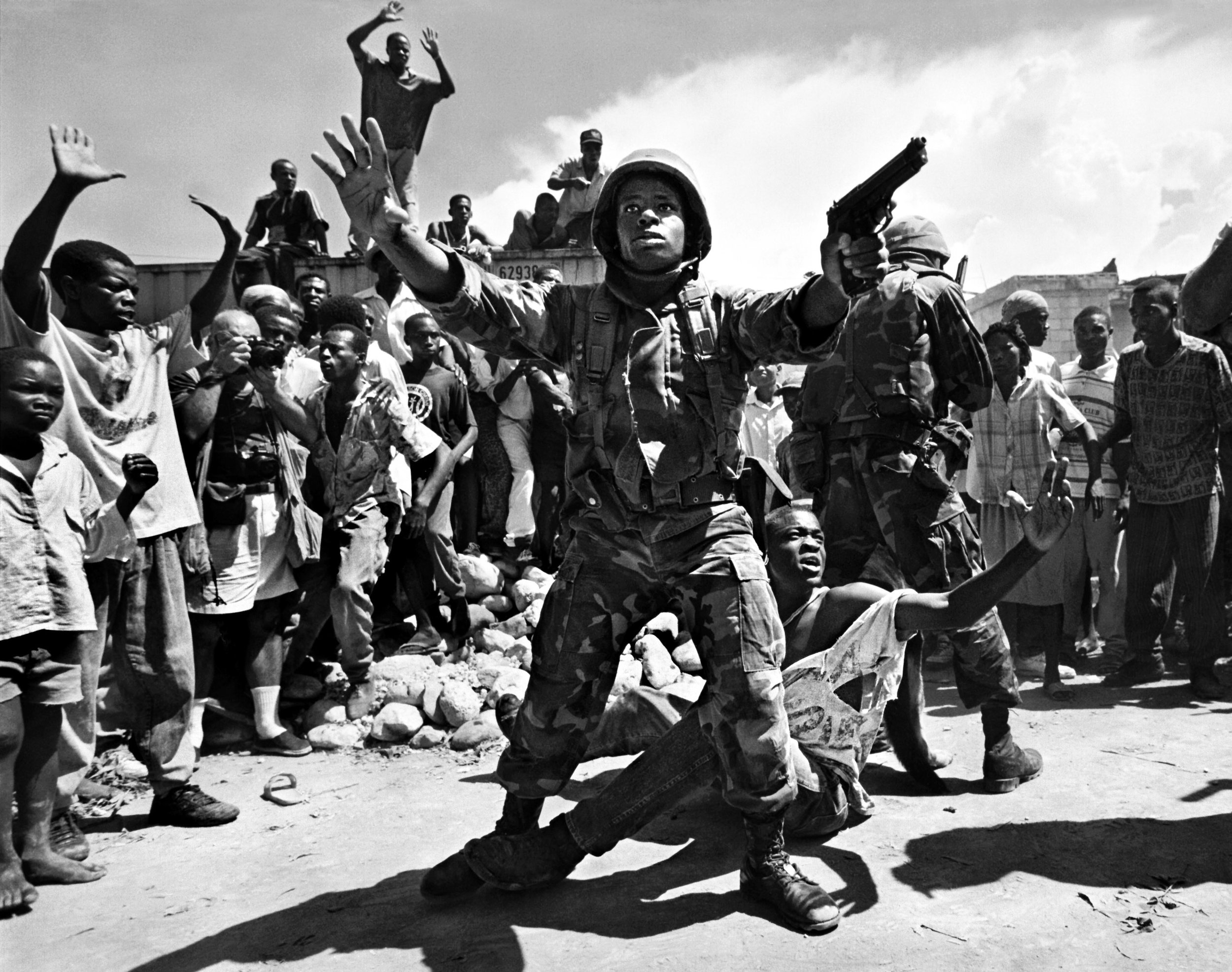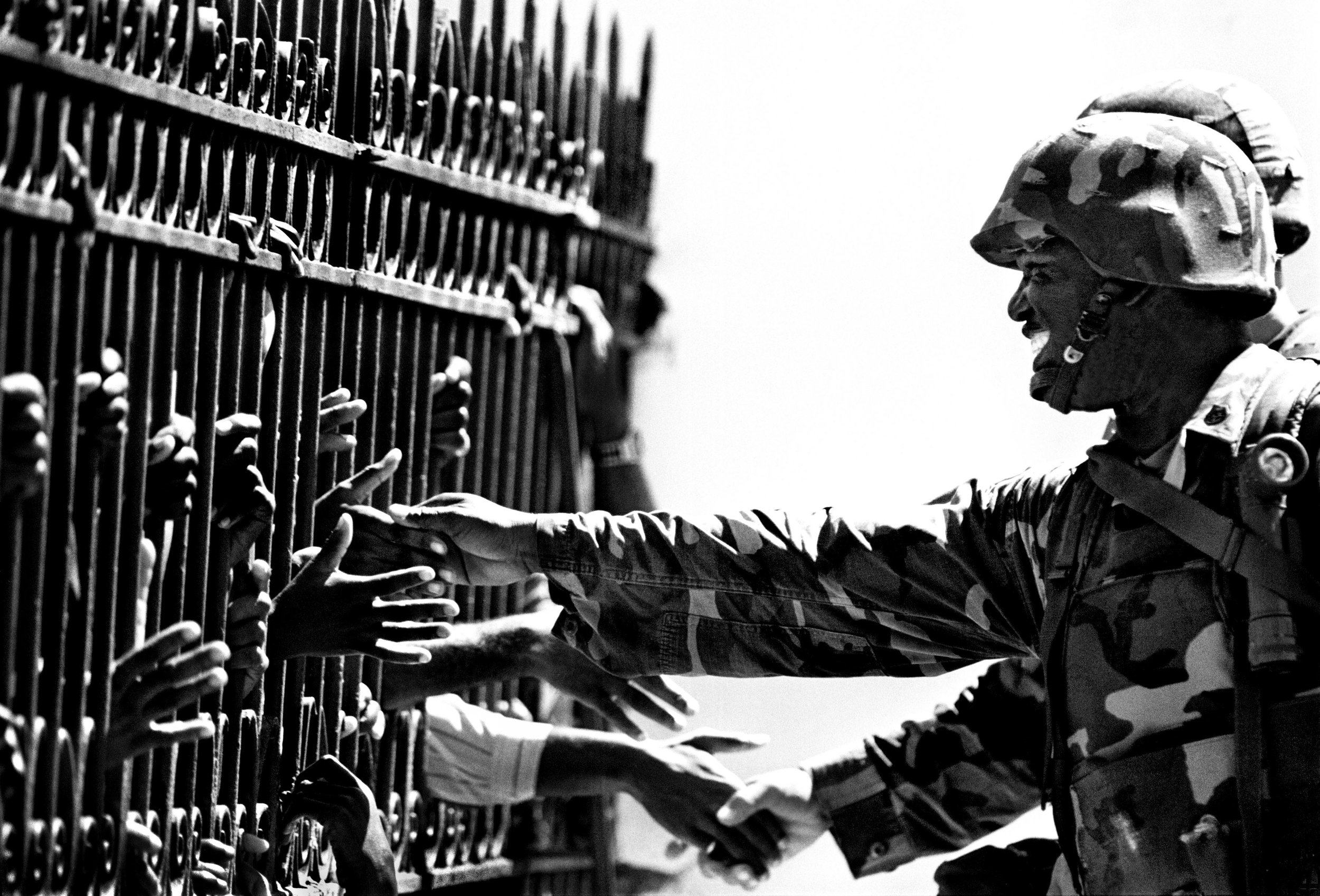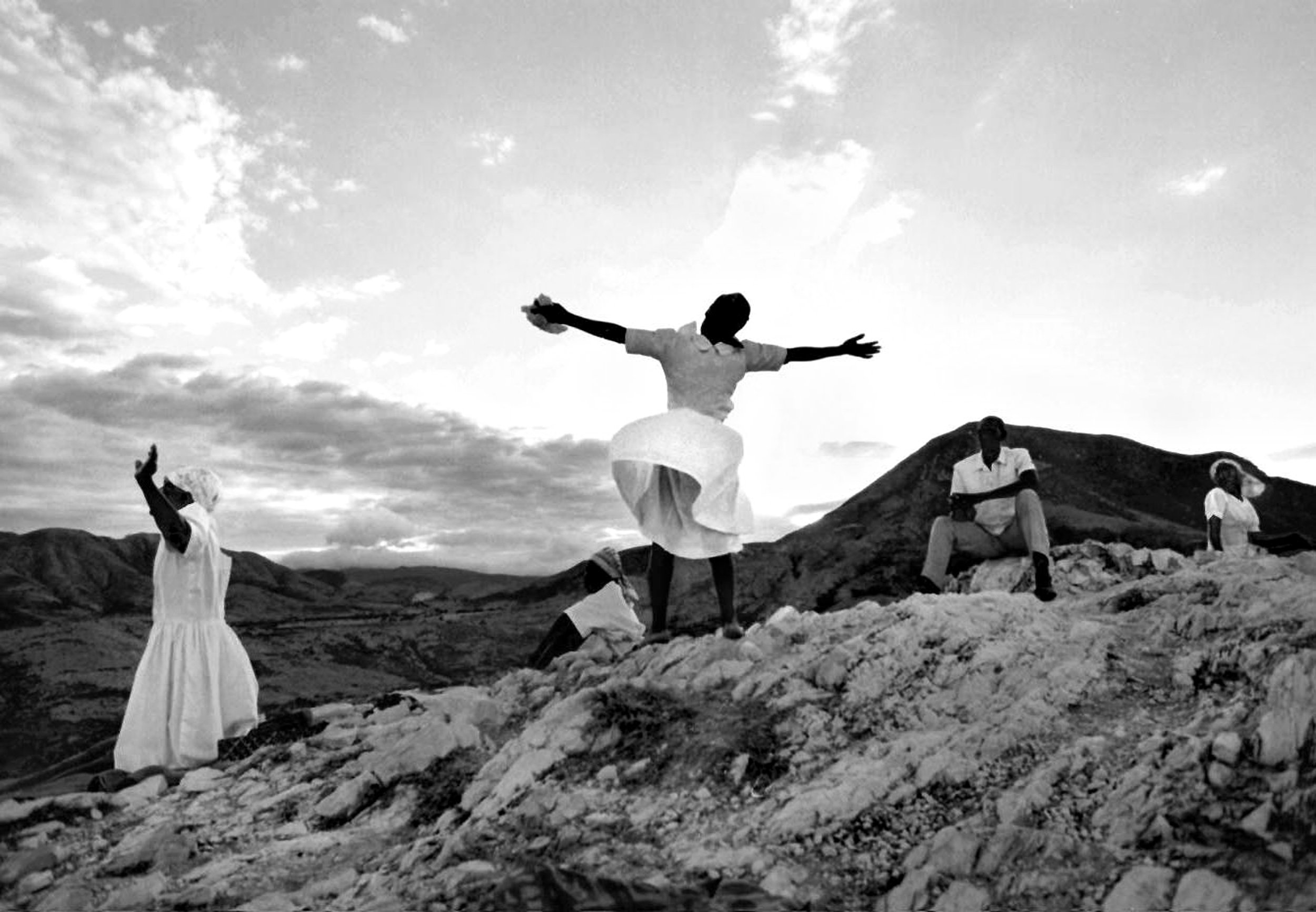Crisis in Haiti
1995 Pulitzer Prize Winner
Spot News Photography
Shortly after the military intervention of Haiti, a U.S. soldier steps in to protect a man suspected of throwing a grenade into a joyous democracy march, killing and injuring numerous pro-Aristide demonstrators in yet another act of intimidation by para-military thugs. The soldier arrested him, saving his life from an angry and bitter crowd looking for justice after many years of repression. Port-au-Prince, Haiti 1994
Out of the Darkness, A Whisper of Hope
A gunshot shatters dawn's calm. A young man lies face down in a rubble-strewn Port-au-Prince street, life seeping from his body as peace has drained inexorably out of this island. Haiti is home of emotional extremes, of gentle and joyous people and of their brutal and repressive brothers.
For three years, the world watched as the country's powerful military and economic elite took out its revenge against the Lavalas movement of President Jean-Bertrand Aristide, who sat in exile a thousand miles away, ousted by a bloody coup. The beatings and killings seemed commonplace from far away, but in Haiti, the pain could never be common.
An embargo designed to force the leaders of the military coup out of power did no such thing. The hemisphere's poorest nation suffered, it seemed, without end. Only when President Bill Clinton made good on his threat of an invasion to restore Aristide to the office to which the Haitian people had elected him did the military leaders agree to resign. Former President Jimmy Carter negotiated an eleventh hour deal with General Raoul Cedras and the invasion force became peacekeepers, nurturing the traumatized sprigs of a fragile democracy.
The American soldiers were greeted at first as liberators. But that jubilation quickly degenerated into the chaos that Haiti has become --beatings and vigilante attacks, grenade assaults and widespread looting crowded out the first cheers for restored democracy. Police beat protesters while U.S. soldiers looked on helplessly, paralyzed by orders that prevented them from intervening. The world watched. The orders changed. Soon the American soldiers stepped in, to stem Haitian-on-Haitian violence, tend the wounded, and retrain a loathed and wild police force.
Haiti remains a torn society, with wounds too deep to vanish in such a short time. Whether the respite is short-lived, whether the darkest forces of the island nation will regain the upper hand cannot yet be known. But a calm has been restored, enough so that, for now at least, people smile again and children can be found once more playing on the streets at night.
A young man collapses dead onto a dirty Port-au-Prince street, yet another victim of a brutal regime's reign of terror in which an estimated three thousand people have been killed. Nearby lay two more bodies, one decapitated. No crowds gather this time. It is too early and the scene all too familiar.
Haitian military leader General Raoul Cedras salutes during a flag-raising ceremony at the Presidential Palace in Port-au-Prince, 1994. He played his cards through to the last hand, finally stepping down only with the knowledge that U.S. warplanes were enroute.
Shortly after the military intervention of Haiti, a pro-democracy demonstration turns violent when A crowd protesting against the reviled Haitian police hurls stones and taunts them. The police respond with severe beatings, killing one man and injuring many, including this woman. Port-au-Prince, Haiti 1994.
A suspected member of FRAPH, the organization held responsible for years of torture and abuse, is dragged from his home toward a vigilante lynching. Other citizens held back the avengers and summoned American troops, who rescued the man.
Haitians scramble to steal rice from a woman who was knocked unconscious when a mob tried to grab her sack of rice during the looting of a food warehouse in Port-au-Prince, 1994. The crippling economic embargo against the impoverished nation caused an increase in hunger and malnutrition, and the power of that hunger erupted in chaos and looting.
In the wretched slum of Cite Soleil, a boy who has known only turmoil and repression, economic embargo and unforgiving military rule, weeps.
President Aristide, shaded by bulletproof glass, releases a dove of peace to mark his return to the office to which his countrymen elected him.
While they await the return of the president they elected, Haitians eager for American help reach out to U.S. soldiers at the fence surrounding the Presidential Palace. One woman's voice rang out, "We are free! Liberty, liberty! You have done God's work".
A moment of joy lights up the gentle face of a child in a Port-au-Prince slum. The tenuous peace and freedom Haitians are now tasting remains an uncertain respite from the history of turmoil in this troubled land.
Additional Images by Carol Guzy of the crisis in Haiti in 1994
To license these images contact The Washington Post newspaper.

























